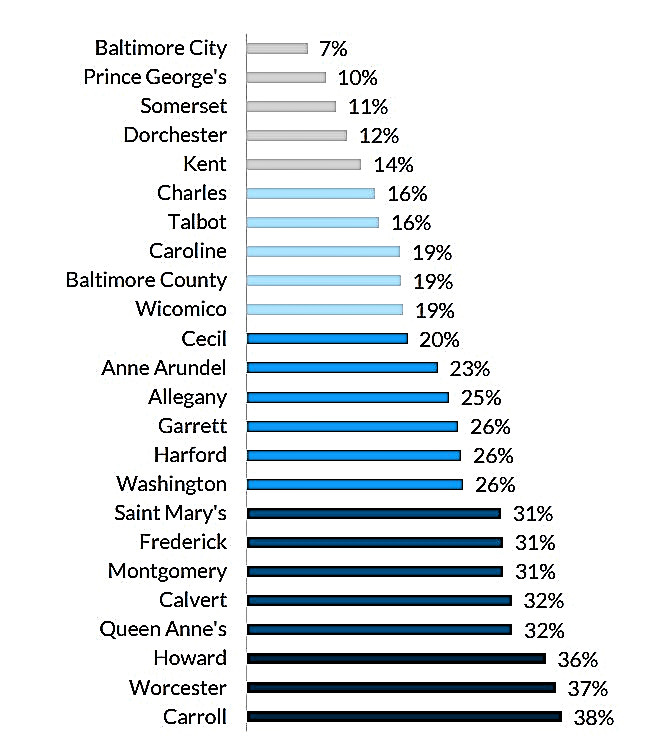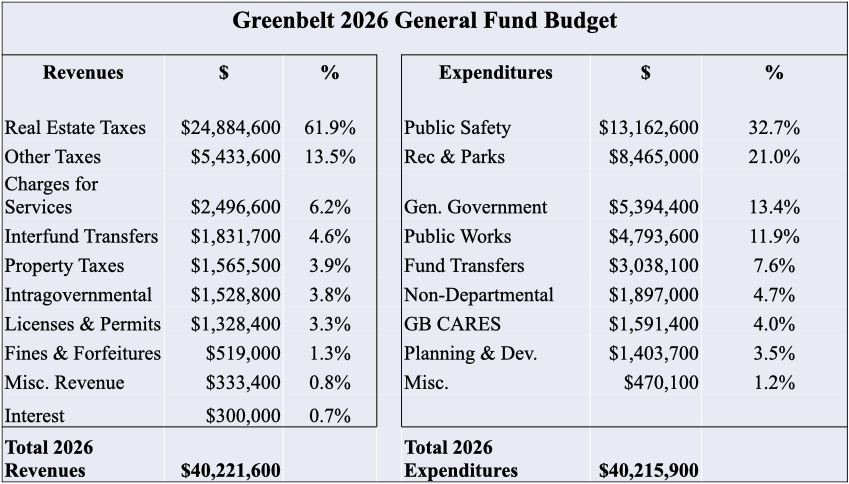On January 24, Maryland’s Comprehensive Assessment Program (MCAP) results for Spring 2022 were released by the Maryland State Department of Education. For Prince George’s County Public Schools (PGCPS), they showed some gains in English Language Arts (ELA) but declines in math competency that CEO Dr. Monica Goldson called “concerning.”
Math Proficiency
The county’s public schools saw a decline in math proficiency scores across every grade level, with the largest declines being among elementary school students, in the 5- to 11-year-old group. In a comparative look at the math proficiency levels, according to MCAP results, for grades three to eight PGCPS ranks second from the bottom with only 10 percent proficiency, ahead of only Baltimore City, which showed 7 percent. The state average was 22 percent for the 2021-22 school year, with Carroll, Worcester, Howard, Queen Anne’s, Calvert, Montgomery, Frederick and St. Mary’s counties reporting proficiencies in the 30s. In the Algebra 1 Test only 6 percent of PGCPS students showed proficiency. For the sake of state comparison, four districts had 5 percent proficiency or less and, near the other end, Howard County had 32 percent.
Trends in Math
Falling proficiency in math is a trend not only in PGCPS, stressed Goldson in a press release, but one “mirrored across Maryland.” In fact, she stated, “The overall PGCPS mathematics declines were less substantial in most instances than the declines experienced by the state in each grade level.” Overall, tests indicate that less than a quarter of fifth-grade students are proficient in math statewide, though almost half are classified as developing learners, the level just below, according to the Maryland Department of Education. In Maryland, most grades improved their math scores compared to Fall 2021 assessments, though they haven’t returned to the pre-pandemic levels of the MCAP results in 2018-2019.
Achievement Gaps
The Maryland data from the MCAP point to widening achievement gaps for students based on race, class and disabilities. Though 36 percent of white students were proficient in math (a decrease from 50 percent in 2018-19), only 10 percent of Black students and 11 percent of Hispanic/Latino students were proficient (declines from 17 percent and 20 percent, respectively, in 2019). Fifty-three percent of Asian students scored proficient (down from 67 percent in 2019). Only 9 percent of students on free or reduced-price lunches were proficient (down from 17 percent in 2019) and only 6 percent of students with disabilities were proficient (down from 8 percent). The gap in math proficiency based on gender grew slightly; in 2019 33 percent of male and female students were proficient; in 2022 24 percent of male students and 21 percent of female students reached proficiency. The county data was not available by student group.
English Language Arts
Meanwhile, PGCPS saw increased proficiency scores in ELA at every grade level. However, statewide the percentage of students scoring proficient in ELA for grades three to eight averages at 44 percent, varying from a low of 21 percent (Baltimore City) to a high of 64 percent (Worcester County), with Prince George’s County coming in at 34 percent of students measuring proficient. Although Goldson emphasized that the county’s growth in ELA scores was mostly higher than the State’s, for both grades three to eight and the English 10 test, Prince George’s County was 30 percent below the highest-ranking district, landing fifth and sixth from the bottom respectively in the rankings of Maryland’s 24 school districts. Half of female students were proficient compared to 38 percent of male students.
Asian students were most proficient in ELA, with 73 percent proficiency in this group. Fifty-nine percent of white students were proficient, 31 percent of Black students and 29 percent of Hispanic/Latino students. Only 11 percent of students with disabilities and 26 percent of students on free or reduced-price lunches were proficient.
Goldson’s Response
Goldson said the results were not unexpected based on national trends, particularly in mathematics. “Last summer we identified mathematics as one of our school district’s priority areas and put strategies in place to address lagging achievement,” stated Goldson. She pointed to learning interventions such as in-school and online tutoring and enrichment opportunities based on need. Also, all pre-kindergarten classes for 4-year-olds transitioned to full-day programs beginning this school year. Maryland offers limited, need-assessed pre-school to low-income families and those receiving public assistance, in contrast to neighboring D.C. Public Schools, which offer free universal pre-K. Last summer, PGCPS offered summer school programming at no cost to parents. Goldson acknowledged in her January 24 press release that the data “clearly illustrates a critical need to accelerate learning.”
Individual and school-level data is expected in March.




